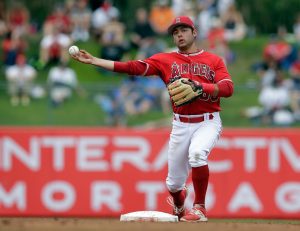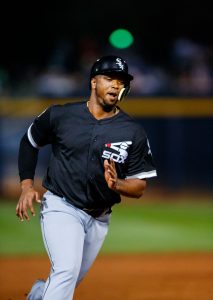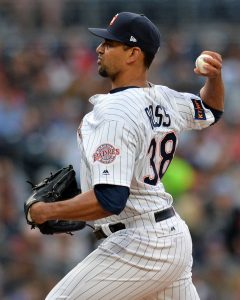Back in 2016, Terry Francona’s usage of Indians left-hander Andrew Miller was revolutionary, and the way he deployed his best relief pitcher, particularly during the postseason, has since had a profound impact on the way MLB teams have used their bullpens. The Andrew Miller Effect changed the game of baseball, and was a fascinating story to watch.
Except that’s wrong. Or at least, it’s the wrong way to look at the story. What we sometimes call the Andrew Miller Effect isn’t actually a story in and of itself, but rather a single chapter in a longer novel that has yet to reach its conclusion. That novel doesn’t begin with Miller, either, and it’s not even really about relievers. At least, not as much as you might think.
In the simplest terms, a team wins a baseball game by scoring more runs than the opposing team. So obviously, there are two ways for a team to improve its chances of winning: get better at scoring runs, or get better at preventing opponents from scoring. The latter objective placed within the confines of baseball’s nine-inning, three-outs-per-inning format outlines a modified objective: the pitching staff must somehow get 27 hitters out while allowing the fewest runs possible. The only real limitation on the pitching staff beyond that is that a pitcher who is removed from the game may not re-enter.
Baseball is a game largely centered around one-on-one matchups between a pitcher and a hitter. And since the hitters must continue to bat in a pre-determined order unless replaced by another hitter, the team that’s trying to get outs in a given half-inning has far more flexibility in gaining matchup advantage. In addition, with the way rosters are usually constructed, a team has the facility to change pitchers 11 or 12 times in a game, while a batter can only be swapped out three or four times total.
The conclusion here is that teams have always had enormous incentive to get creative in the way they deploy their pitchers. It’s not an entirely new concept; teams have been using LOOGYs (Lefty One-Out Guys) against left-handed hitters for years because the pitcher has a distinct, proven advantage in such a matchup; it’s just one way of increasing the chances they’ll get an important out. Similarly, Francona using his best reliever in situations with runners on or where the opposition’s best hitters are due up is all about finding ways to get the difficult outs with the highest probability and bridging the gap from zero to 27.
The Indians’ strategy with Miller was ground-breaking because it blurred the hierarchy of “middle relievers”, “setup men” and “closers”; in some ways, the roles of Josh Hader, Chad Green and more are products of the Andrew Miller Effect. The Rays are now breaking ground by similarly blurring the lines between “starters” and “relievers”. If you’re reading this, you probably already know that Rays manager Kevin Cash has been using relievers such as Sergio Romo and Ryne Stanek to get the first few outs of a baseball game, then turning to his “starters” to come in after that.
The core logic behind the strategy makes plenty of sense. Romo as a reliever is probably better equipped to get outs at the top of the lineup than the second- or third-best starter in a thin Rays rotation. In addition, it means that the pitcher entering in relief of Romo will pitch to the weaker part of the lineup first; that means the new pitcher can be called upon to face more batters without having to expose himself to the most dangerous opposing hitters a third time, likely facing the bottom half of the lineup three times apiece instead. On the whole, the results of this experiment have been positive, which has everyone around baseball talking about the strategy and the Mets in particular considering deploying it on Monday.
It’s hard to imagine that the Sergio Romo Effect won’t have an impact as loud as (or louder than) the Andrew Miller Effect. It seems really unlikely that the strategy will just go away; as we saw with the Andrew Miller Effect, teams might hesitate to try something bold and unusual, but they’ll copy it quickly once they see it working for a rival club.
It’s still possible that MLB will step in at some point and write a new rule that limits this fast evolution of pitching roles. But if that doesn’t happen, we could eventually be looking at a version of baseball in which pitchers are defined by how many outs they’re typically called upon to get rather than in which part of the game they’re called upon to get them. At that point, we might have to entirely reimagine the labels we put on pitchers.
The roles of the truly elite aces like Corey Kluber and Max Scherzer seem unlikely to change very much. There’s little reason to disrupt the role of a guy who stands a solid chance to throw a complete game with brilliant results on any given day. But what if pitchers were used (and valued) based on a combination of the following five factors:
1) How efficiently can the pitcher get outs when throwing fewer pitches at maximum effort?
2) How efficiently can the pitcher get outs when throwing more pitches at an effort level that allows him longevity in the game?
3) At what point should the pitcher be pulled to prevent further exposure to the same hitters?
4) To what extent should the pitcher be shielded from his weak-side platoon?
5) To what extent should the pitcher be shielded from hitters who are particularly good at hitting the types of pitches he throws?
If pitching really is all about getting 27 outs while preventing runs with the highest possible efficiency (and it is), then the way a pitching staff is deployed might continue to become less of a formula and more of a jigsaw puzzle. That means shedding the labels of “starter” and “reliever” in favor of labels that describe hurlers in terms of the above factors. In fact, perhaps labels would end up entirely useless and it would prove a mistake to use them at all. In this hypothetical (future?) environment, it’s likely that pitchers would be valued based on their efficiency in the unique situations they’d be asked to jump into.
Kluber, for instance, is a fairly uncommon asset; he’s an elite ace capable of preventing runs while going deep into games. Taijuan Walker, on the other hand, is a good example of someone who had significant splits last season after facing a lineup twice through. In 2017, Walker owned a 2.68 ERA and .298 opponent’s wOBA for the first two trips through the batting order, making him a very useful pitcher. However, when facing hitters for the third time, Walker’s ERA and wOBA ballooned to 5.97 and .357, respectively. Would he have been more useful to the Diamondbacks if they’d capped his outings at 18 batters faced, perhaps with the added benefit of being able to rest him for fewer days between outings?
Meanwhile, Hader and Green are somewhat of a throwback to the Mariano Rivera-type reliever capable of performing at maximum effort to achieve superhuman results against six to nine hitters. Hader’s done that 12 times so far this year, while Green’s accomplished the feat in seven appearances. Pitchers of this ilk are about as rare as those of Kluber’s, and the ability to get so many outs with such an astonishing level of efficiency is an incredible asset to any pitching staff. Perhaps these players will set a blueprint for others like them in the near future; even pitchers who can perform at 70-80% of Hader’s capabilities for a single trip through the order would be useful pitching every other day or so. There are plenty of starters who’ve had dramatic splits between their first and second trips through the other. Mike Foltynewicz comes to mind as an example, who limited opponents in 2017 to a .233/.302/.348 line the first time through, but allowed an uglier .295/.391/.516 line during his opposition’s second look.
With more pitching changes per game, lefty or righty specialists could end up being more useful than ever. Maybe that guy with the nasty slider and a batting practice fastball could still find a specialized role getting out opponents who have difficulty hitting breaking balls. The Craig Kimbrels and Corey Knebels who come in to get three or four outs would have their place, too. If the starter/reliever template begins to crumble, the traditional five-man rotation and seven- or eight-man bullpen might crumble with it, leaving behind a roster format in which the number of outs a pitcher is capable of getting might not matter quite so much as long as he’s capable of getting the outs he’s asked to get with a rate of efficiency that justifies his roster spot. Each of the 30 MLB pitching staffs could end up being its own unique cornucopia of pitcher types cleverly assembled by its respective GM and used strategically and creatively by its skipper, the only rule being that it needs to prove adept at getting from zero to 27, game after game.
The question at that point becomes, how do we place a value on each pitcher in these new roles? What is the value of an average 100-pitch guy in comparison to an above-average twice-through-the-order hurler, and how do both compare to a guy like Ryan Dull who needs to be shielded from left-handed hitters but gets righties out nearly 80% of the time? If more teams begin to protect long-appearance pitchers from being exposed to the order a third time through, would the abundance and limited longevity of those pitchers make them less valuable as a group, or would their efficiency and flexibility within the format help elevate their value in comparison with 100-pitch guys and elite short-appearance pitchers?
The cop-out answer is that we’d have to wait to see all this happen in order to know. But it’s probably fair to think that teams would use stats like WPA to find the answer, or create entirely new stats to weight a pitcher’s efficiency against the number of total outs he’s tasked with getting in his particular role. It’s also pretty much a certainty that the market itself would have a say in the value of each class of pitcher. If twice-through-the-order type guys are abundant in a given year, teams may not be willing to pay as much for them. On the flip side, if many teams are in need of a once-through-the-order shutdown guy or a three to four out fireman to bridge the gap between longer-appearance guys, the cost of those players could increase based on supply and demand, much in the same way the value of a good second baseman goes up if more teams are lacking at the position.
The evolution of out-getting won’t simply end with the Rays’ latest experiment. There are clear advantages to be found in the creative deployment of pitchers that contrast heavily with baseball traditions, and with teams becoming more and more data driven, you can bet they’ll continue to search for more effective ways to get from zero to 27. Traditions aren’t rules, after all.




